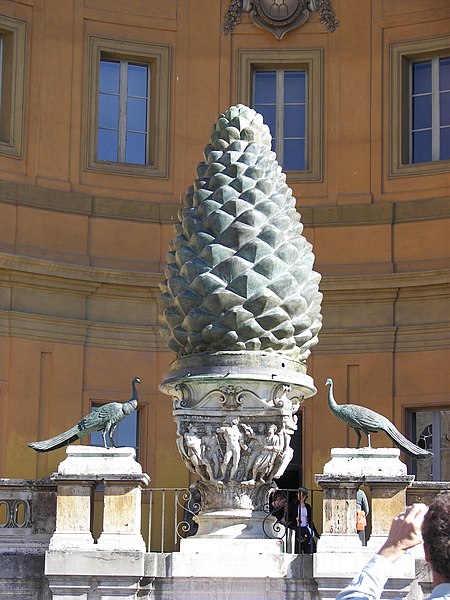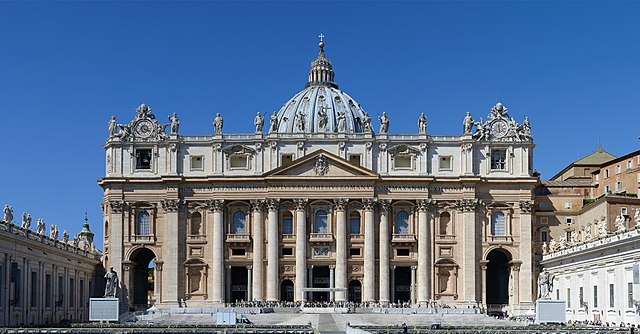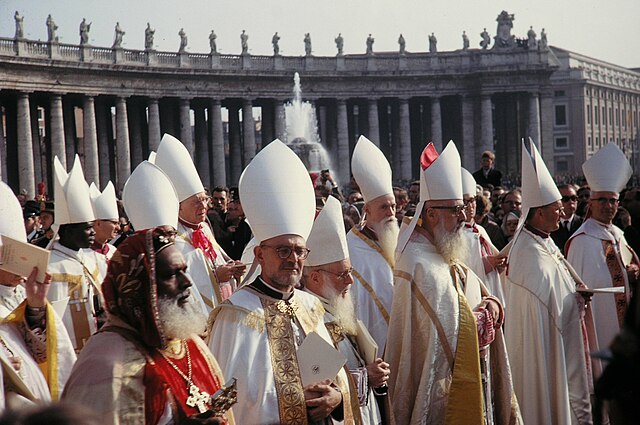Old St. Peter's Basilica was the church buildings that stood, from the 4th to 16th centuries, where St. Peter's Basilica stands today in Vatican City. Construction of the basilica, built over the historical site of the Circus of Nero, began during the reign of Roman Emperor Constantine I. The name "old St. Peter's Basilica" has been used since the construction of the current basilica to distinguish the two buildings.
19th-century drawing of St. Peter's Basilica as it is thought to have looked around 1450. The Vatican obelisk is on the left, still standing on the spot where it was erected on the orders of the Emperor Caligula in 37 AD.
Fresco showing cutaway view of Constantine's St. Peter's Basilica as it looked in the 4th century
Maarten van Heemskerck – Santa Maria della Febbre, Vatican obelisk, Saint Peter's Basilica in construction (1532)
Fontana della Pigna (1st century AD), which stood in the courtyard of the Old St. Peter's Basilica during the Middle Ages and then moved again, in 1608, to a vast niche in the wall of the Vatican facing the Cortile della Pigna, located in Vatican City, in Rome, Italy
The Papal Basilica of Saint Peter in the Vatican, or simply Saint Peter's Basilica, is a church of the Italian High Renaissance located in Vatican City, an independent microstate enclaved within the city of Rome, Italy. It was initially planned in the 15th century by Pope Nicholas V and then Pope Julius II to replace the ageing Old St. Peter's Basilica, which was built in the fourth century by Roman emperor Constantine the Great. Construction of the present basilica began on 18 April 1506 and was completed on 18 November 1626.
Main façade and dome of St. Peter's Basilica, seen from St. Peter's Square
View from the Tiber on Ponte Sant'Angelo and the Basilica. The iconic dome dominates the skyline of Rome.
Panorama of St. Peter's Square
Bishops at the Second Vatican Council in 1962








